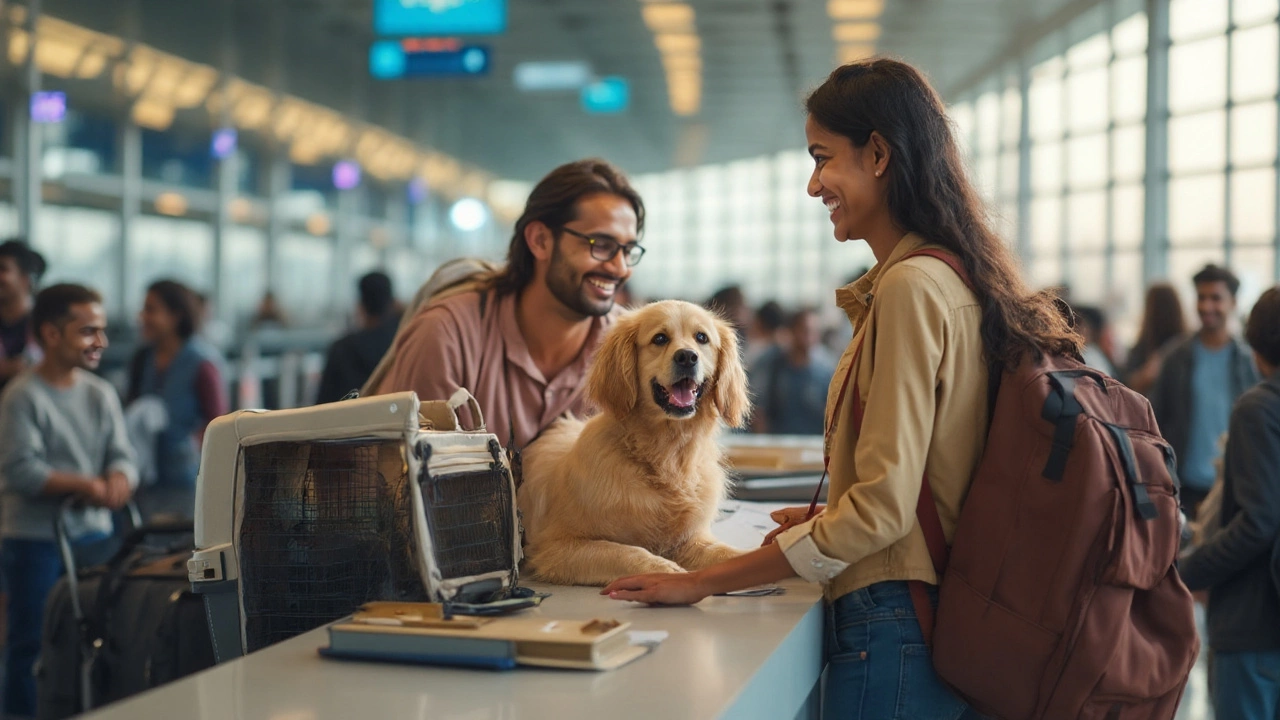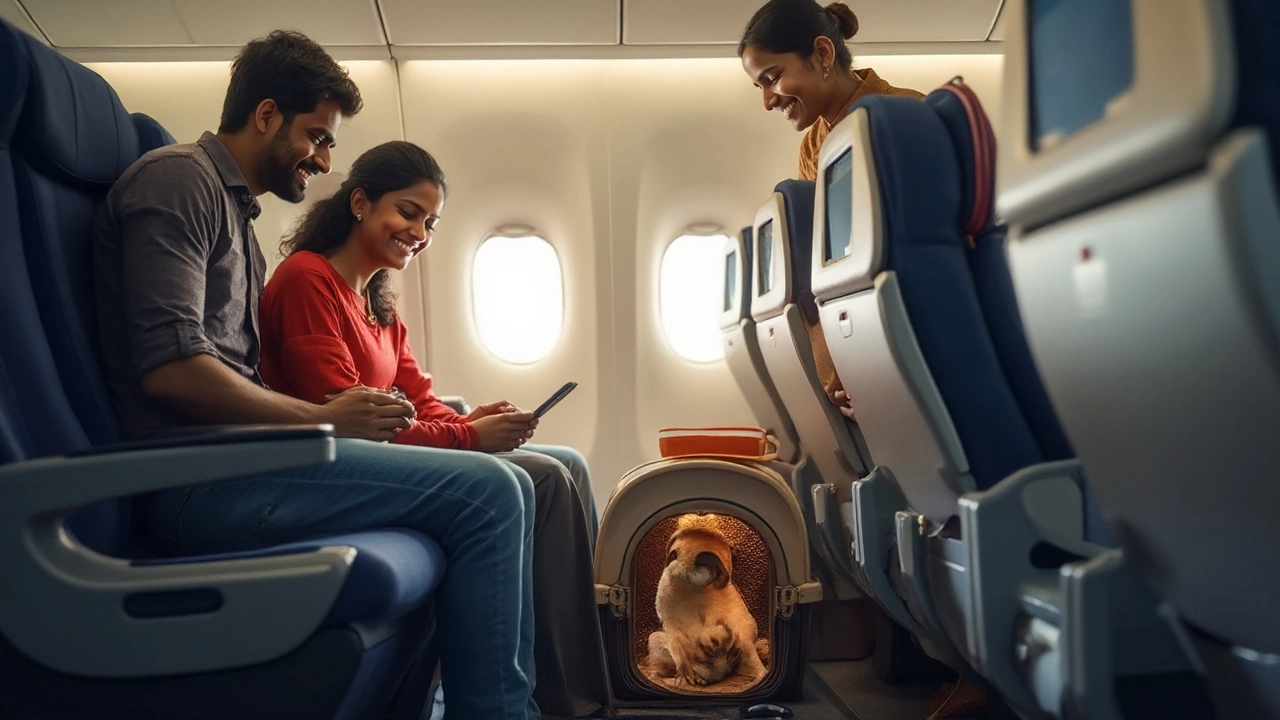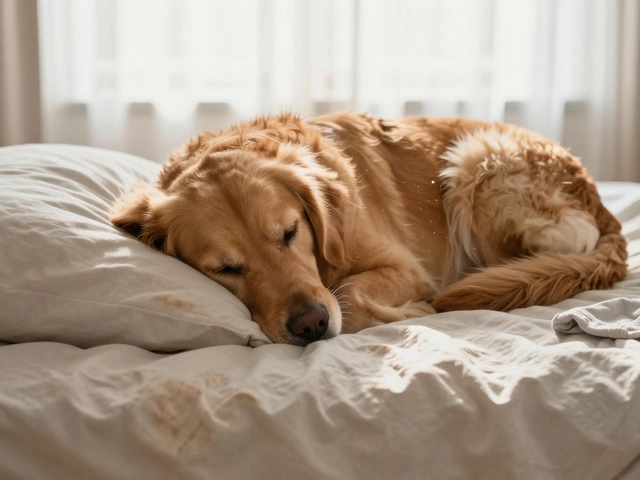
Luna once ate my boarding pass. She looked so smug, her tail wagging, my trip hanging by a thread. It got me thinking: if I ever had to fly with her, could I even take her on the plane? Loads of people face the same snag, standing in the kitchen with a suitcase, dog leash dangling, and one burning question: which airline will let my beagle (or cat, or rabbit, or heck—even a miniature guinea pig) join the ride instead of being bounced from one phone queue to another?
Airline Policies on Pet Travel: Who Says Yes and Who Says No?
Airlines aren’t exactly lining up to give your pet a window seat. Some roll out the red carpet. Some slam the door shut. Here’s the wild part: each airline has its own rules, fees, and restrictions. There’s no single unlocked gate that guarantees your furry friend a seat. Most of the time, whether your pet flies in the cabin or cargo comes down to size, breed, and even the destination itself.
For example, Air New Zealand lets small cats and dogs travel as checked-in cargo. If your animal weighs under 7kg (including the carrier), airlines like Air Canada, Delta, Air France, and United typically allow them in the cabin. Lufthansa offers an even more lenient approach, sometimes welcoming rabbits and other small mammals aboard. Of course, some airlines—like Emirates and Qatar Airways—only allow falcons in the passenger cabin. I’m guessing your cockapoo doesn’t qualify in the raptor department.
Fees can be a nasty surprise. Qantas charges between $100 and $500 AUD depending on whether it’s domestic or international. Delta charges $125 per pet for in-cabin US flights. Air France, United, and American Airlines all have price lists that look more like restaurant menus than pet policies. Fees aren’t just per trip; they’re per segment—meaning if your flight has a stopover, you’ll get charged twice. Here’s a useful rundown I keep on the fridge:
| Airline | Cabin | Cargo | Starting Fee (USD) | Major Restrictions |
|---|---|---|---|---|
| Air New Zealand | No | Yes | ~$150 | No pets in cabin, must use IATA crate |
| Delta | Yes | Yes | $125 | No snub-nosed breeds, carrier must fit under seat |
| Lufthansa | Yes | Yes | €70 (cabin) | Weight/size limits, check destination regulations |
| Qantas | No | Yes | ~$100 | Check for breed/temperature restrictions |
| Air Canada | Yes | Yes | $50 (domestic) | Only small pets in cabin, strict quotas |
Some carriers—including Ryanair, EasyJet, and Jetstar—don’t allow pets at all (unless it’s an assistance animal). Imagine turning up at the gate, cat bag in hand, and getting sent straight home. Ouch.
Countries can throw another wrench in the works. Strict rules exist for arrivals into the UK, Australia, and New Zealand. Here, pets must arrive as manifested cargo, never in-cabin, and you’ll need approved documentation, microchips, health certificates, and sometimes a quarantine stay. In short—read the fine print twice.
As one IATA official pointed out:
“We recommend booking pets as soon as your flight is confirmed. Quotas fill quickly and pet documentation needs careful review.”
Cabin or Cargo: What’s Best for Your Pet?
So, the burning question—should your buddy chill out below deck, or join you for in-flight snacks at 30,000 feet? Size is usually the decider. If your pet and carrier together weigh less than the airline’s cabin pet limit (usually 7-8kg for cats or small dogs), you might get away with an under-the-seat experience. Anything bigger heads to the cargo hold. It’s not as grim as it sounds, but not every airline treats cargo pets equally.
Let’s take a concrete example. Flying Air Canada from Auckland to Toronto, your 5kg Pomeranian can sit under the seat if you pre-book and supply an airline-approved carrier. But try that with a 30kg German Shepherd? No dice. In-cabin is out of the question; checked cargo is your only shot (with rules around kennel size, temperature embargoes, and pre-flight health checks).
Snub-nosed breeds (think bulldogs, pugs, and Persian cats) get extra scrutiny because they’re more at risk of breathing problems during flight. Airlines like United and Delta have flat-out bans on these breeds flying in cargo during certain months—or at all. Some ban them from flying in-cabin, too, if temperatures are high or routes are long.
Worried about cargo? Modern cargo holds are pressurized and climate-controlled. Still, it can be stressful for some animals. Dogs and cats with separation anxiety might fare better in-cabin. Older pets, or those on medication, should avoid flying if possible.
Whatever you pick, book early—most airlines cap cabin pets at 2-4 per flight, especially in economy. The best seats go fast, and you’ll need to submit vaccination records, microchip numbers, and sometimes a vet letter stating your pet is fit to fly.
- Small pets (under 7kg): Usually allowed in cabin if booking early and using a soft airline-approved carrier.
- Larger pets: Must fly in hold, in a hard IATA-approved crate, with bedding and water.
- Exotic animals: Rules vary. Some allow rabbits, hamsters, or birds; many don’t—ask before booking.
Word to the wise: don’t try to sneak your pet on board “emotional support” style. Since 2021, US airlines don’t have to accept emotional support animals unless they’re certified service animals. If caught, you may be refused boarding and even face fines.

What You Need Before You Book: Health, Documents, and Crate Requirements
You don’t want to botch this. Booking a pet’s flight means paperwork galore: health certificate, vaccination records, microchip details, and import permits if you’re leaving your home country. The certificate must be issued close to the flight date (usually within 7-10 days) and signed by an accredited vet. Check for extra requirements like rabies titer blood tests or parasite treatments—Australia and New Zealand love those.
Most airlines have a page dedicated to pet travel, with detailed crate sizes, weights, and what you can and can’t shove in with your animal (no toys or treats—sorry). For example, an IATA-compliant crate should have:
- Enough room for your pet to stand, turn, and lie down comfortably.
- Secure latches but not locks that require a key or tool to open.
- Absorbent bedding and at least two bowls clipped to the door (for food/water).
- A label showing both your name and your animal’s info.
Microchipping isn’t just a good idea—it’s usually required for any international trip. Your pet’s microchip must match the number on their health certificate. For dogs or cats heading to Europe, the microchip needs to be ISO-compliant (15 digits, readable by most scanners). In the US and Canada, most microchips are accepted, but always double-check your destination’s requirements.
Timing is everything. Some rabies or parasite treatments must be given no less than 21 days before travel—but no more than 12 months. These narrow windows can mess you up. If you don’t time the shots and paperwork exactly, your pet can be refused at check-in or quarantined at destination.
- Check airline AND government websites for current rules—regulations can change overnight.
- Many countries (including Australia/NZ) make you use an approved pet shipper—don’t risk freelance pet transporters.
- Ask your vet for travel tips, especially for anxious pets. Sometimes anti-anxiety meds can do more harm than good at altitude.
- Put an extra tag on your pet’s collar with your phone number and destination address.
- Freeze your pet’s water dish before packing: it’ll thaw slowly and avoid accidental spills on the ride to the airport.
There’s a heap of stories about pets escaping crates or paperwork blunders causing missed flights. Plan for hiccups and factor in extra time at every airport stop.
Popular Routes and Airline Differences: Not Every Journey Is Equal
If you pick a random pair of cities and a random airline, don’t assume you’re in the clear. Popular long-haul routes (Auckland-Sydney, LA-Tokyo, London-NYC) have strict pet controls that can change with the seasons. For instance, Qantas bans pet cargo across much of Australia during peak summer due to high tarmac temperatures. Lufthansa and Air France sometimes run “pet hotels” at their big hubs, handling layovers with animal welfare in mind. Air New Zealand requires all pet arrivals to Auckland to clear quarantine—no direct handover at the gate.
Many European airlines—like KLM and Lufthansa—let small pets travel in-cabin right across the EU, but the rules tighten up for flights to the UK or Ireland because of quarantine laws. United and Delta offer dedicated “PetSafe” and “Pet Shipping” services, complete with climate-controlled vans, special monitoring, and even pet lounges at select airports. Yeah, your dog might rack up more frequent flyer perks than you do.
Some Asian transporters, like Korean Air and Singapore Airlines, are strict on paperwork and crate dimensions but do a solid job keeping pets safe with in-transit care and temperature monitoring. But check routes: Singapore Airlines may permit in-cabin on regional flights, yet refuse all pets on legs to Australia or New Zealand.
The difference between success and airport disaster comes from reading through every airline’s “Pet Policy” page. It helps to call up and confirm—never just book online and assume your pet is sorted, especially during busy travel windows. Popular times (school holidays, December/January) mean pet slots vanish fast, so book months in advance when possible.
Domestic-only carriers (like Jetstar or Southwest) almost never allow pets in the hold—just in-cabin, if at all. If you’re crossing continents, know that “code-share” flights can mess things up: your booking with Delta might mean flying on a partner airline with stricter rules for part of the trip. Always check all airlines that touch your itinerary for pet acceptance, limits, and transfer regulations.
Airlines may also set breed and species bans based on past experience or IATA safety guidance. Dogue de Bordeaux? Not flying Delta cargo. Ferret? Not on British Airways. The more exotic or short-nosed, the tougher it gets—so keep it mainstream if possible.

Tips for a Smooth Flight With Your Pet
Booking a spot is just the start. To keep your pet calm and your journey drama-free, it helps to think ahead. First, build up crate comfort at home: feed your pet in the crate, place toys or worn T-shirts inside, and start with short trial runs in the car. Gradually, turn the crate into their “safe place.”
On the day, skip a big breakfast—digestion plus turbulence can end in a smelly disaster. Walk your dog or let your cat play before heading to the airport, so they’re calm and a bit tired. Arrive early. Airlines say “no pets accepted after check-in closes,” and nobody will bend for your schedule.
Packing matters. Bring medical documents, digital and paper copies (trust me, phones run out of battery right when you need them). For the plane, keep a small bag handy with wipes, poop bags, and one familiar-smelling item. Airlines may ask to see your crate before accepting your pet. If you’re flying internationally, customs could ask for paperwork at both ends—so keep it together in a folder.
During boarding, keep things light and breezy. Pets pick up on your mood. No drama. For cargo pets, make sure the crate is snapped shut but not locked—this is crucial in emergencies. Tape a bag of spare kibble and a photo of your pet to the crate with your contact details. Sometimes staff will feed your pet if there are long delays, and the photo helps avoid any mixups.
Once in the air, resist the urge to open the carrier mid-flight unless necessary (most airlines forbid it). Offer water, not food. Cabin air dries pets out fast. On arrival, check your pet immediately for signs of dehydration or distress. Have a pee pad ready for those unavoidable “reunions” at arrivals!
- Try to book early morning or evening flights—cooler temperatures mean less risk for pets in the hold.
- If you’re worried about noise, use a crate cover or thick towel to reduce stress (as long as there’s airflow).
- Keep airport transits short. The longer the layover, the more stressful for your pet.
- Know your backup plan: if your flight is cancelled, what’s available for pet accommodation nearby?
- Never sedate your pet without a vet’s written approval. Some meds don’t travel well at high altitude.
- Plan for delays. Carry extra snacks and water dishes just to be safe.
- Always double-check policy changes a week before flight—airlines occasionally shift the rules without warning.
Flying with pets isn’t rocket science, but it does take patience, planning, and a thick skin when dealing with call centers. I like to remember Luna gnawing my boarding pass the day before her first trip. It felt like chaos. But with good research, a sturdy crate, and the right airline, we made it (mostly) intact. No airline offers a magic answer, but knowing the ins and outs tilts the odds in your furry friend’s favor.





